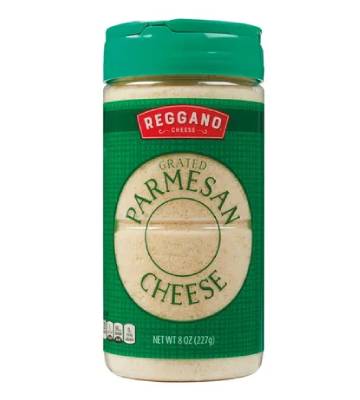Food Nutrition Facts
Nutrition Facts For
Parmesan Cheese - Grated
Portion Size: 2 Tablespoon
| Nutrient | Value | % Daily Value* |
|---|---|---|
| 20.0 kcal | 1% | |
| 1.5 g | 0% | |
| 17.0 g | 1% | |
| 2.5 mg | 1% | |
| 100 mg | 4% | |
| 125.0 mg | 4% | |
| 4.0 g | ||
| 0.0 g | ||
| 0.0 g | ||
| 4.0 g | ||
| 2.0 g | ||
| Cheese |
*Daily value based on a 2,000 calorie diet. Your daily values may be higher or lower depending on your calorie needs and health goals.
Calculate your daily calorie needs here
Nutrition Facts For 2 Tablespoon of Parmesan Cheese - Grated

Parmesan cheese, also known as Parmigiano-Reggiano, is a hard, granular cheese originating from the Parma, Reggio Emilia, Modena, and Bologna regions of Italy. It's made from unpasteurized cow's milk and aged for a minimum of 12 months, with some varieties aging for much longer, even up to several years. This aging process contributes to its distinctive, complex flavor, characterized by nutty, savory, and slightly sweet notes. The texture of Parmesan is also unique, with a hard, granular consistency that crumbles easily, making it ideal for grating over pasta, salads, and other dishes.
The production of Parmesan cheese is a highly regulated process, ensuring its quality and authenticity. Only cheese produced in the designated region and meeting specific standards can be labeled as Parmigiano-Reggiano. This dedication to tradition and quality results in a cheese that is highly prized for its flavor and versatility. Whether grated, shaved, or enjoyed in chunks, Parmesan cheese adds a distinct depth of flavor to a wide range of culinary creations, making it a staple in many kitchens around the world.







